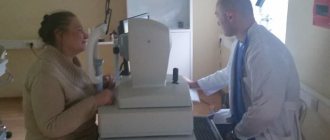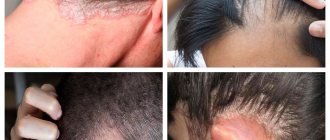Why does the upper eyelid droop after Botox?
There are two reasons why ptosis of the upper eyelid appears after Botox:
In this article
- Why does the upper eyelid droop after Botox?
- Who is to blame for the occurrence of ptosis after Botox?
- Ptosis: symptoms and classification
- What are the consequences of ptosis of the upper eyelid?
- Treatment of eyelid ptosis after Botox
- How to prevent upper eyelid ptosis
- Decreased or loss of muscle tone: this can cause drooping of not only the eyelid, but also the eyebrows, so the asymmetry of the face will be much greater.
- Severe swelling of the tissues of the eyelids and forehead: muscle fibers are paralyzed due to botulinum toxin, as a result of which the outflow of lymph and venous blood becomes worse. Therefore, fluid accumulates in the tissues and pulls the eyelids down.
Treatment of ptosis of the upper eyelid after Botox (or Dysport) should be based precisely on the cause of its occurrence. It will not be possible to solve the problem without a qualified specialist. You should not try to get rid of the defect using self-selected treatment products. This will only make the situation worse.
How to fix: step-by-step instructions on what to do
What to do if your eyelids are drooping? There are several ways to eliminate unwanted consequences using:
- Medicines. Their action is often aimed at strengthening nerve fibers, restoring eyelid mobility and accelerating the dissolution of botulinum toxin.
Such drugs are injections of Proserin, Neuromedin, mesotherapy cocktails, eye drops (Vizin, Apraclonidine), Neromultivit - a vitamin complex for oral administration. Typically, eyelid lifting occurs after a few weeks of drug therapy, and only by a couple of millimeters. Therefore, pharmaceutical drugs are included in complex therapy.
Repeated Botox procedure. If the drug is injected into the fibers that cause drooping, muscle strength is balanced and the eyes begin to open and close steadily. Another option is to inject botulinum toxin into the other eyelid (with minimal drooping) - the appearance of the face will be symmetrical, albeit a little tired. But this is clearly better than a complete disproportion of the palpebral fissures.- Special procedures. You can apply warm compresses, visit the sauna, or do facial inhalations with herbs. A bag of salt or heated cereal, or a boiled egg in the shell helps a lot - you need to apply it to the area between the eyebrows or forehead. The procedure is done daily for 15-20 minutes.
However, warming will only help if there is no swelling. At home, you can also resort to a small massage. First, you should apply a tightening cream (lifting) to the eyelids and around the eyes to enhance the effect and provide additional hydration. After this, you need to perform circular strokes clockwise, then lightly pinching and patting.Using massage movements, the Botox drug is quickly removed from the cells, so you can massage the entire face, and not just the area around the eyes. Another remedy for ptosis is paraffin eye masks. To do this you need:
- Melt the paraffin.
Add a couple of drops of essential oil (lavender, tea tree or almond) to it.
- Wait until it cools down a little (to a temperature that is pleasant to the skin).
- Then soak thick napkins in this mixture and apply them to your eyelids, avoiding getting the product on your eyelashes.
- Wait until it hardens completely and carefully remove the paraffin compress.
Who is to blame for the occurrence of ptosis after Botox?
Of course, all responsibility for the quality of the procedure lies with the specialist. But it’s not always a matter of his lack of professionalism. The following factors can lead to the appearance of the conditions described above:
- Individual intolerance to the administered drug. It occurs especially often if Botox (Dysport) is administered frequently. However, after the first procedures everything is usually fine. The “critical mass” of the drug is achieved in 8-10 sessions, which are performed over a period of approximately 3-4 years. Between procedures you need to take breaks, during which time muscle mobility will be completely restored. If, after the next procedure, cosmetologists notice that the forehead, eyelids or eyebrows have “dropped”, the amount of the drug is reduced and the area of its administration is narrowed.
- High dosage of the drug. In this case, the occurrence of ptosis after Botox is caused by careless injections or the use of large amounts of botulinum toxin. There are many options for administering the drug, and all of them have the right to life, however, increasing the amount of the substance increases the risk of complications. +
- Some inexperienced cosmetologists often administer drugs according to a universal scheme. One of the most dangerous points used for Botox injection is located 1 cm from the inner edge of the eyebrow. Each person's eyebrows are positioned differently, sometimes they are at the level of the edge of the eye socket. Therefore, if these features are not taken into account, Botox often “turns off” the frontalis muscle or some part of the eye muscle.
- Features of injection distribution: after an injection, the drug molecules “move” slightly further from the injection points. The likelihood of upper eyelid muscle paralysis depends on diffusion: the higher it is, the greater the risks. All drugs have their own distance - this fact must be taken into account by the cosmetologist.
How to avoid eyebrow ptosis after botulinum toxin injections
You can avoid eyebrow ptosis after correction of forehead wrinkles with botulinum toxin type A injections by following simple rules:
- When injecting into the frontalis muscle, botulinum toxin should be injected into the middle area of the forehead or above ( at least 2 cm above the eyebrow in all patients; in older patients - 4 cm above the eyebrow).
- One study found that intradermal injection of botulinum toxin into the forehead provided results comparable to intramuscular injections but with a lower risk of ptosis.
Ptosis: symptoms and classification
It is quite difficult not to notice the development of ptosis after Botox: the upper eyelid noticeably droops, causing the palpebral fissure to become much smaller. The speed at which the defect develops varies: usually ptosis appears already on the 2nd day after the injection, but in some cases this can happen a week or two later.
There are several types of ptosis of the upper eyelid after Botox:
By location they are distinguished:
- unilateral - develops only in one eye and occurs most often;
- bilateral - appears on the eyelids of both eyes.
By severity:
- partial - the eyeball is covered by the eyelid up to the upper third of the pupil;
- incomplete - half of the pupil is closed with the eyelid;
- full - the pupil is completely closed by the eyelid.
Regardless of the type, drooping of the upper eyelid significantly impairs the quality of life and appearance, so it is important to know what to do to treat it and restore the functionality of the muscles affected by Botox injections.
There are various causes of ptosis:
- congenital absence or underdevelopment of the levator (the muscle that lifts the upper eyelid)
- previous nerve diseases that lead to damage to the oculomotor nerve, and this consequently leads to paresis or paralysis of the muscle that lifts the upper eyelid (stroke, Horner's syndrome, meningitis, encephalitis, multiple sclerosis, cerebral abscess, diabetic neuropathy)
- external trauma: tumor, wound, rupture
- botulinum toxin injections, which are done in the forehead area to smooth out wrinkles and folds
- age-related changes
The most common form of ptosis is involutional (age-related). If there are suspicions of other causes of ptosis, it is recommended to undergo additional examination by specialists (ophthalmologist, neuro-ophthalmologist, neurologist).
What are the consequences of ptosis of the upper eyelid?
Drooping of the eyelid as a result of an unsuccessful Botox injection is accompanied by unpleasant symptoms. Among them:
- Pronounced facial asymmetry, resulting from significantly different sizes of the palpebral fissures. In addition to the eyelid, sometimes one of the eyebrows droops, which makes the asymmetry even more noticeable.
- Problems with cleaning and moistening the eyeball, resulting from the inability to blink. In some cases, this causes chronic eye irritation.
- Difficulty trying to close the eyes completely, caused by loss of muscle control. Because of this, the visual organs are in constant tension, quickly get tired, and heaviness is felt in the frontal region. To look at objects, you have to tilt your head back, this provokes poor circulation and headaches.
- Problems with the drainage of tear fluid, causing tears to constantly flow from the eye.
If not only the lifting eyelid muscles are damaged, but also the oculomotor muscles, then, in addition to eyelid ptosis, strabismus and decreased visual acuity may occur.
All of these side effects are rare. However, even one of them is enough to worsen the quality of life and increase the level of discomfort.
Experts' opinion
The advantage of Botox is that the procedure itself takes 10-15 minutes and does not affect the ability to work, which is why in Europe it is called the lunch break procedure. However, experts advise spending more time on the preliminary examination and subsequent recovery period to reduce the risk of undesirable consequences. Even if Botox is not done for the first time, such subtleties should not be neglected.
If ptosis occurs, you don’t have to do anything if it only causes aesthetic discomfort - muscle activity recovers on its own within six months. During this time, the patient will have to endure a number of inconveniences - spoiled appearance, facial asymmetry, unwanted attention from others, but over time this will end. Those for whom it is very important to maintain a beautiful appearance need to think about treating or camouflaging ptosis.
According to statistics, ptosis occurs in 16-18% of cases, so before the procedure you should weigh your preferences and possible risks - are the problems with your face so severe that they are worth solving at the cost of the risk of getting even bigger problems. Even with repeated Botox, the risk does not decrease, so experienced patients face the same dangers as those who decided to make such changes for the first time.
Watch the video on the topic:
Treatment of eyelid ptosis after Botox
To begin with, we note that it is possible to remove ptosis after Botox. In many cases, the eyelid begins to function approximately 3 weeks after the injection. However, all this is individual; sometimes drooping (ptosis) of the upper eyelid goes away after six months, when the effect of the administered drug stops.
Doctors can still speed up this process and improve the patient's appearance while the muscles are still paralyzed. Treatment of ptosis is carried out using the following methods:
- Administration of another additional dose of the drug. This is necessary to lower the “non-functioning” eyelid and helps balance the strength of the muscles, causing it to begin to function. For mild ptosis, an injection is given into the muscles that raise the eyebrow above the opposite eye. This helps to lower it a little and even out the asymmetry.
- The introduction of drugs that help restore the functionality of damaged muscles and strengthen the fibers located next to them. Such drugs are quite effective, but you should not expect that they will immediately cure ptosis. This method can only be used as one part of therapy.
- Myostimulation/microcurrents are physiotherapeutic methods that help restore muscle tone. It will be quite expensive, but it will have an effect. Massages also significantly speed up the healing process; you can do them yourself, kneading the damaged eyelid with your fingertips.
Asymmetry cannot be treated with surgery. If the treatment methods described above do not give the desired result, all that remains is to wait until the effect of the drug wears off and muscle function recovers on its own.
Mechanism of occurrence
The active ingredient in Botox is a toxin that causes muscle paralysis. When administered correctly, it has an effect in those areas where wrinkles appear - it relaxes facial muscles, smoothes the skin, and helps make the face look younger.
If Botox is administered incorrectly, its effect affects places where it was not intended. Eyelid ptosis is caused by Botox injected into the corners of the eyes to correct crow's feet. The Botox injection procedure requires a very precise calculation of the injection point, so doctor errors are possible.
Who is to blame for the complication?
It is difficult to answer this question unequivocally. Exactly where Botox works depends on several factors:
- Correct calculation of the drug administration point;
- Accuracy of the procedure;
- Distribution of the substance under the skin after the procedure.
The first two factors are influenced by the skill of the doctor - only a good specialist can correctly calculate the area of injection of the medicine and place the injection exactly at the right point. On the other hand, after the procedure, the medicine is distributed under the skin for some time (this can take up to a day).
During this time, the patient must observe a number of restrictions - you cannot touch your face, fall asleep face down, you need to control your facial expressions, protect your skin from sudden temperature changes, and do not wear makeup. If this is not done, the drug will not end up where the doctor administered it.
The most common mistake patients make is coming to an eyelid Botox procedure without sunglasses. Prolonged squinting from bright light can negate all the doctor’s efforts.
How to prevent upper eyelid ptosis
No one can be immune from ptosis of the upper eyelid after a beauty injection. However, you can reduce this risk by following simple rules:
- You should only contact specialists who have been working with botulinum toxin for many years. This will minimize the number of errors associated with technique and dosage, and if a complication occurs, it can be quickly and safely eliminated.
- If minor neurological symptoms occur, the procedure should not be performed: due to overstrain, the muscles may react in an unpredictable way.
- Follow all recommendations for facial care after Botox injection: many of them are aimed specifically at preventing drooping eyelids.
What needs to be done when eyelid ptosis does appear after Botox? Contact another specialist with extensive experience, tell him in detail about the drooping eyelid and the procedure. Then he will use a different dosage of the drug and will be more attentive during the work process.
Causes of side effects
If a client deliberately hides the presence of contraindications, ignores the cosmetologist’s recommendations, and does not adhere to restrictions before and after the procedure, the risk of developing blepharoptosis or edema increases.
A cosmetologist may make one of the following mistakes:
- do not take into account the individual structural features of the patient’s facial muscles;
- excessively dilute the drug and administer it in large doses, which will cause increased diffusion of the substance;
- violate the insertion technique;
- choose the wrong injection points;
- It is not possible to find out all the contraindications.
It is much easier to avoid unpleasant side effects than to engage in lengthy and sometimes expensive treatment in the future. That is why it is extremely important to responsibly choose a clinic and a doctor who will inject the drug.
About Botox
After the first use of the substance to correct appearance, it became in demand. This is due to visible changes after the first procedures. All drugs use a toxin. Manufacturers add other components to reduce negative effects.
There are many companies involved in the production of drugs. The difference is in composition, effectiveness, achieved effect and danger. In addition, they differ in price.
The effect of the drug is associated with blocking nerve impulses. They do not give commands to contract muscle tissue. Due to the immobilization of the muscles, the skin becomes smoother. However, the procedure cannot be called rejuvenation. It gives only a temporary effect and reduces the ability of cells to recover. The body gets used to the poison and it becomes less effective.
Botox and other cosmetic procedures
Mesotherapy and botulinum toxin, peeling and Dysport, Botox and facial massage - the compatibility of these manipulations is of active interest to all our patients. In some cases, we recommend not resorting to anti-aging Botox injections for now, but taking advantage of the possibilities of biorevitalization. Of course, the procedures and their principle of influence are very different. Mesotherapy is intradermal injections that nourish with vitamins and moisturize; they do not affect the muscles. For those who are recommended the overall effect of different types of manipulations, there is one rule - a long time should pass between sessions. As for rejuvenating facial massage and Botox, it is obvious that these are mutually exclusive procedures for a certain period, since they have the opposite effect on the skin. But before the procedure, a massage is even recommended.










